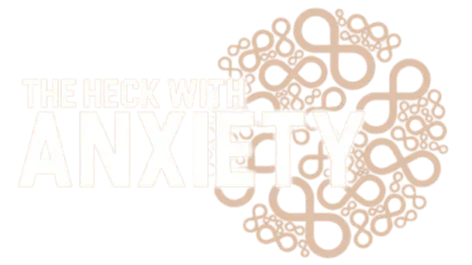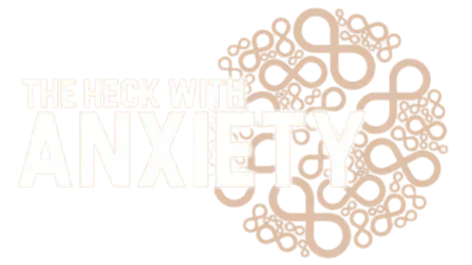How to Create Boundaries Without Feeling Guilty: A Path to Mental Freedom

We all understand how tough it gets when it comes to creating boundaries with others. Guilt can sometimes tag along, making things harder. But once you've set those boundaries, you'll feel a sense of relief and liberation. It's really important to focus on the things that matter most, like your mental well-being, health, and daily tasks that you've got. Boundaries give you a way to let others know what you expect and at the same time protect both your physical and mental health.
You have to own your self-care because without it, guilt, shame, or even resentment will pile up. It doesn't happen overnight, but eventually, it gets easier to do. In this blog, we share some of the best tips on how to create boundaries without guilt. Remember, self-care is not a luxury; it's a necessity. It's a way of showing yourself that you are valued and important.
Why Do We Feel Guilty About Boundaries?
Most of the time, the leading cause of boundary guilt comes from social conditioning. We are taught that saying "no" or setting limits is selfish or unkind, and we worry about how the other person will feel and react. As a result, we internalize the idea that setting personal boundaries will hurt others or make us seem difficult.
According to guilt psychology, this guilt is misplaced, so you are not responsible for managing how others feel about your boundaries. In the end, you are the only one responsible for your own mental and emotional well-being.
Best Ways to Create Boundaries Without Feeling Guilty
Creating boundaries can make you feel uncomfortable at first. Still, with these simple strategies, you can establish them confidently without feeling any guilt.
1. Acknowledge Your Right to Boundaries
The first step in setting boundaries is to know that you have every right to own them. It is essential to understand that creating boundaries doesn't mean that you are pushing people away; it's about creating space for yourself. Everyone has the right to protect their time, energy, and emotional health. Just like you wouldn't feel any guilt about eating when you are hungry, you shouldn't feel guilty about setting limits in any area of your life.
Have you ever heard about the transformative power of visualization or the law of attraction? Both concepts have the potential to ignite a positive mindset within you. Visualization is not just a tool; it's a phenomenon that has empowered countless Olympic athletes, entrepreneurs, and entertainers to program their minds for success before they even step onto the field or stage.
By understanding and practicing visualization, you gain the power to intentionally manifest your dreams, objects, and people into your life experience. Whether or not you believe in the concept of being the creator of your own reality is irrelevant. What matters is that you have the freedom to experiment with your thoughts and build something new in your reality.

2. Be Clear and Direct
When you communicate your boundaries, always be straightforward and avoid over-explaining. For example, instead of saying, "I'm sorry, but I can't help you with this," you can say, "I'm not available to help you with that right now." Clear communication is essential, leaving little room for confusion and helping others know where you stand. It is important to focus on what you need rather than how the other person's reaction might make you feel.
Start Small
If you are not used to setting boundaries, starting small is okay. Start by saying "no" to smaller requests that feel less emotionally charged, such as extra work when you're already busy or social events when you need some alone time. As you practice setting healthy boundaries more, you will find it easier to enforce them in other aspects of your life. Over time, you’ll notice that the more you say no to things that drain you, the more empowered you’ll feel about protecting your energy.
Reframe Guilt as Self-Care
When you first start to set boundaries, you will likely feel a sharp pain of guilt, which is natural. However, it's important to understand that guilt doesn't mean you're doing something wrong. This guilt is a sign of growth. When you start to practice self-compassion, you’ll be able to reframe guilt as part of your learning process. Boundaries are a way to show yourself the same kindness you would offer others.
Expect Pushback
As soon as you start to enforce your boundaries, some people will resist or react negatively—especially if they are used to you saying "yes" all the time. Their reaction is a reflection of their own needs, not your worth. It’s vital to remember their discomfort is their responsibility, not yours. Stay firm. Over time, people will respect you and come to honor your limits.
Use "I" Statements
When setting boundaries, use "I" in your statements to express your needs clearly and without placing blame. For example, instead of saying, "You never respect my time," try, "I feel overwhelmed when I don't have enough time for myself." This approach helps you communicate needs without sounding accusatory, making it more likely others will respect your boundaries.
Prioritize Your Mental Health
Visualization is a mental practice that helps a person develop vivid and detailed mental images of their dream life or desired results. You can use imagination to simulate the experiences in your mind, a technique often used by sports athletes for psychology and personal development.
For example, if you are preparing for a swimming competition, you can close your eyes and visualize yourself confidently taking first place in the competition. This will help your subconscious mind think of these imaginary situations as significant. Using all of your senses during the visualization process will help you practice effectively, which will create the way for your ideal future and specific goals.
Visualization has many uses, such as manifesting a specific goal or preparing yourself for tough challenges. According to a study, creative visualization techniques can improve performance. For example, tennis players who visualized doing better serve performed exceptionally. Many successful people focus on using visualization techniques regularly, which makes their subconscious mind more open-minded to achieving the outcome they envision.
Using your imagination can significantly move you toward your dream life. Here are some of the most useful and favorite visualization techniques that will help you to achieve your goals:

Eventually, creating boundaries is about protecting your well-being. Boundaries help you manage your energy and maintain emotional balance in every area of life. When you feel guilty about saying no, remind yourself that you're choosing to prioritize your health and happiness. Focus on what’s best for you—it makes releasing guilt much easier.
Eventually, creating boundaries is about protecting your well-being. Boundaries help you manage your energy and maintain emotional balance in every area of life. When you feel guilty about saying no, remind yourself that you're choosing to prioritize your health and happiness. Focus on what’s best for you—it makes releasing guilt much easier.
Visualization can truly change your daily life by helping you manifest a positive mindset and achieve your dream life. By consistently applying these powerful visualization techniques, you can set yourself up for success. Engage all of your senses and maintain a positive emotional focus to enhance your desired outcomes.
Adopt a regular manifestation practice to keep your goals clear and your motivation strong. Embrace a positive mindset, believe in your ability to achieve your goals, and witness how your life aligns with your dreams.

Subscribe for clear, real-world strategies to help you manage stress, build resilience, and feel more in control of your day.
© 2025 The Heck With Anxiety
Privacy Policy
Terms and Conditions
Refund Policy
Legal Disclaimer
